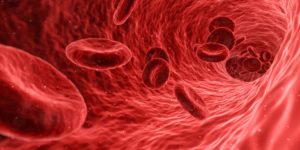Blood substitutes: safe by decree.

In the last twenty years, blood and its derivatives have been involved in the transmission of some viral diseases such as: code B to C by l'AIDS.
Why this phenomenon could have happened and how to try to avoid it in the future has been suggested by many parties. The spread of viral diseases with blood, it could often be avoided, have slowed down the economic interests of many companies that produce blood products and the late stance of the ministerial control system (Ministry of Health, Higher Institute of Health, Superior Health Council).
In Italy, the decisions of some of these public bodies are currently being examined by more than one judicial office.
From the works of the Judiciary of Trento emerges the possibility of “culpable epidemic”, as reported with evidence only in the local press and not, on the national one. The Roman Judiciary, he seems more cautious and shows that he needs more time to take any initiative.
We therefore reconstruct through official documents, for our attentive reader, some institutional steps on the management of blood products in Italy.
The 4 November 1993 the Garavaglia, Minister of Health, disposes via telegraph, after so many hesitations, the suspension of the use of blood products that had not been tested (as a European directive of 1989) for the hepatitis C virus.
The next one 28 December, to comment on the aforementioned decision and especially in reference to the concerns of some parents about the danger of albumin added as a stabilizer in some vaccines intended for children, l’Istituto Superiore di Sanità in una nota “believes that the measure adopted by the Ministry should be interpreted as very precautionary”. It will be paradoxically, the same signatory of this consideration, the 2 May 1996, having to adjust the shot by saying: “E’ universally accepted that the presence of viral markers (the antibodies that the body produces if infected with virus, N.d.R.) in the starting plasma it constitutes in itself a reason for not using the plasma itself”. Without words.
So it was, and remains fundamental, the search for these viral markers in plasma intended to produce truly safe blood products (we remember for all, common immunoglobulins for tetanus, used in accidental trauma).
The 28 August 1996 the Ministry of Health Decree is published and we consider it seriously contradictory, the "new course", where it is established that the search for viral markers must be performed on the “plasma mixture”. The conceptual and cultural involution is evident.
It is known that the "plasma mixture" on which the industry works is made up of a pool of 10-15.000 donations.
What really does not convince us, also according to our university reminiscences, is that if the pool is greater than 1.000-2.000 donations, the extreme dilution frustrates the search for a possible presence of viral markers, in other words antibodies.
If new diagnostic methods exist, also ministerial, we are open to any cultural revolution.
If not, all pools containing infected plasma, if highly diluted, they can easily overcome, even now by decree, security checks.
The advantage could be all for that manufacturing company that with an understatement will indicate how, little serious, which procures plasma at low costs from mercenary donors in geographic areas at risk.
The disadvantages, in the future, they will find them once again on our skin.
Reserved literary property, publication prohibited without written permission from the publisher.
